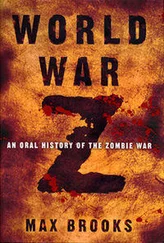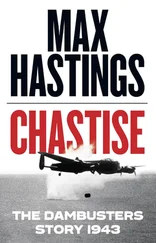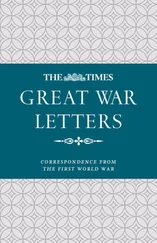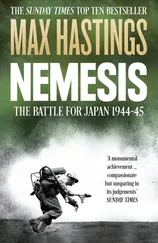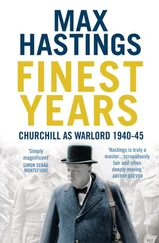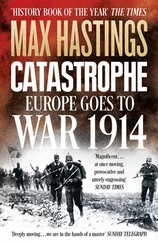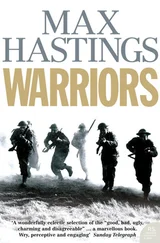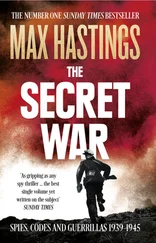On 7 September, ten French divisions moved cautiously into the German Saarland. After advancing five miles, they halted: this represented the sum of France’s armed demonstration in support of Poland. Gamelin was satisfied that the Poles could hold off Hitler’s Wehrmacht until the French rearmament programme was further advanced. Slowly, the Polish people began to understand that they were alone in their agony. Stefan Starzy ski, a former soldier in Piłsudski’s Legion, had been Warsaw’s inspirational mayor since 1934, famous for making his city a riot of summer flowers. Now, Starzy ski broadcast daily to his people, denouncing Nazi barbarism with passionate emotion. He recruited rescue squads, summoned thousands of volunteers to dig trenches, comforted victims of German bombs who were soon numbered in thousands. Many Varsovians fled east, the rich bartering cars for which they had no fuel to procure carts and bicycles. Sixteen-year-old Jew Ephrahim Bleichman watched long columns of refugees of his own race trudging wretchedly along the road from Warsaw. In his innocence, he did not grasp the special peril they faced: despite Poland’s notorious anti-Semitism, ‘I had never experienced anything more severe than name-calling.’
Exhaustion among men and horses soon posed the main threat to the headlong German advance. Cavalryman Lance-Corporal Hornes found his mount Herzog repeatedly stumbling: ‘I called out to the section commander – “Herzog’s had as much as he can take!” I had scarcely got the words out when the poor beast fell to his knees. We’d gone 70km on the first day, then 60 on the second. And on top of that, we’d had the trek over the mountains with the advance patrol galloping…That meant we’d gone nearly 200km in three days without any proper rest! Night had long fallen, and we were still riding.’
The horrors of blitzkrieg mounted: while Warsaw Radio played Chopin’s Military Polonaise, German bombing of the capital was now accompanied by the fire of a thousand guns, delivering 30,000 shells a day, which pounded its magnificent buildings into rubble. ‘The lovely Polish autumn [is] coming,’ fighter pilot Mirosław Feri wrote in his diary, recoiling from the irony. ‘Damn and blast its loveliness.’ A pall of grey smoke and dust settled over the capital. The royal castle, opera house, national theatre, cathedral and scores of public buildings, together with thousands of homes, were reduced to ruins. Unburied bodies and makeshift graves lay everywhere on the boulevards and in the parks; food supplies, water and electricity were cut off; with almost every window shattered, glass fragments carpeted pavements. By 7 September the city and its 120,000 defenders were surrounded, as the Polish army reeled back eastwards. Its chief of staff, Marshal Edward Rydz-  migły, had fled Warsaw with the rest of the government on the second day of war. The army’s supply system and communications collapsed. Cracow fell almost without resistance on 6 September; Gdynia followed on the 13th, though its naval base held out for a further week.
migły, had fled Warsaw with the rest of the government on the second day of war. The army’s supply system and communications collapsed. Cracow fell almost without resistance on 6 September; Gdynia followed on the 13th, though its naval base held out for a further week.
A counter-attack on 10 September by eight Polish divisions, across the Bzura river west of Warsaw, briefly disrupted the German offensive and took 1,500 prisoners. Kurt Meyer of the SS Liebstandarte acknowledged with mingled admiration and condescension: ‘The Poles attack with enormous tenacity, proving over and over again that they really know how to die.’ Contrary to legend, on only two occasions did Polish horsemen engage German tanks. One such episode took place on the night of 11 September, when a squadron hurled itself full gallop at the village of Kałuszyn, strongly held by the Germans. Out of eighty-five horsemen who attacked, only thirty-three afterwards rallied. The invaders used their own cavalry to provide reconnaissance and mobility, rather than for assaults. Lance-Corporal Hornes’s unit advanced in column, while two men rode ahead: ‘They would hurry at a gallop from one hill to the next, then wave the troop on. As another precaution, lone horsemen were sent out alongside us on the ridges of the hills. Suddenly, we saw new unfamiliar contours emerging from the thick dust-cloud: small, agile horses with bobbing heads, ridden by Polish Uhlans in their khaki uniforms, long lances held with one end in the stirrup leather and the other slung from the shoulder. Their shining tips bobbed up and down in time with the horses’ hooves. At the same moment, our machine-guns opened fire.’
The Wehrmacht was vastly better armed and armoured than its enemies. Poland was a poor country, with only a few thousand military and civilian trucks; its national budget was smaller than that of the city of Berlin. Given the poor quality and small number of Polish planes compared with those of the Luftwaffe, it is remarkable that the campaign cost Germany 560 aircraft. Lt. Piotr Tarczy ski’s artillery battery came under intense shellfire a mile from the river Warta. Himself a forward observer, he found his telephones dead; linesmen sent to investigate never returned. Without having summoned a single salvo, he was surrounded by German infantrymen who took him prisoner. Like many men in his predicament, he sought to ingratiate himself with his captors: ‘I can only compare my situation with that of someone finding himself unexpectedly faced by influential strangers upon whom he is completely dependent. I know I ought to have been ashamed of myself.’ As he was marched away to captivity, he passed several dead Polish soldiers; instinctively, he raised his hand to salute each one.
Amid popular rage against the invaders of their homeland, there were scenes of mob violence which conferred no honour upon Poland’s cause. Mass arrests of ethnic Germans – supposed or potential fifth columnists – took place throughout early September. At Bydgoszcz on ‘Bloody Sunday’, 3 September, a thousand German civilians were massacred after allegations that they had fired on Polish troops. Some modern German historians claim that up to 13,000 ethnic Germans were killed during the campaign, most of them innocents. The true figure is almost certainly much lower, but such deaths provided a pretext for appalling and systemic Nazi atrocities towards Poles, and especially Polish Jews, which began within days of the invasion. Hitler told his generals at Obersalzberg: ‘Genghis Khan had millions of women and men killed by his own will and with a light heart. History sees him only as a great state-builder…I have sent my Death’s Head units to the east with the order to kill without mercy men, women and children of the Polish race or language. Only in such a way shall we win the Lebensraum that we need.’
When the Wehrmacht entered Łód , thirteen-year-old George  l
l  zak was bewildered by seeing women throw flowers at the soldiers, and offer them sweets and cigarettes. Children shouted ‘Heil Hitler!’
zak was bewildered by seeing women throw flowers at the soldiers, and offer them sweets and cigarettes. Children shouted ‘Heil Hitler!’  l
l  zak wrote wonderingly: ‘Boys I was at school with waved swastika flags.’ Though these welcoming civilians were Polish citizens, they were of German ancestry and now flaunted their heritage. Goebbels launched a strident propaganda campaign to convince his people of the justice of their cause. On 2 September the Nazi newspaper Völkischer Beobachter announced the invasion in a double-deck headline: ‘The Führer proclaims the fight for Germany’s rights and security’. On 6 September Lokal-Anzeiger asserted: ‘Terrible bestiality of the Poles – German fliers shot – Red Cross columns mowed down – nurses murdered’. A few days later, Deutsche Allgemeine Zeitung carried the startling heading ‘Poles Bombard Warsaw’. The story stated: ‘Polish artillery of every calibre opened fire from the eastern part of Warsaw against our troops in the western part of the city.’ The German news agency denounced Polish resistance as ‘senseless and insane’.
zak wrote wonderingly: ‘Boys I was at school with waved swastika flags.’ Though these welcoming civilians were Polish citizens, they were of German ancestry and now flaunted their heritage. Goebbels launched a strident propaganda campaign to convince his people of the justice of their cause. On 2 September the Nazi newspaper Völkischer Beobachter announced the invasion in a double-deck headline: ‘The Führer proclaims the fight for Germany’s rights and security’. On 6 September Lokal-Anzeiger asserted: ‘Terrible bestiality of the Poles – German fliers shot – Red Cross columns mowed down – nurses murdered’. A few days later, Deutsche Allgemeine Zeitung carried the startling heading ‘Poles Bombard Warsaw’. The story stated: ‘Polish artillery of every calibre opened fire from the eastern part of Warsaw against our troops in the western part of the city.’ The German news agency denounced Polish resistance as ‘senseless and insane’.
Читать дальше
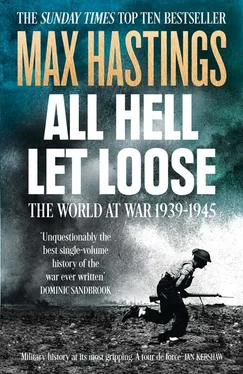
 migły, had fled Warsaw with the rest of the government on the second day of war. The army’s supply system and communications collapsed. Cracow fell almost without resistance on 6 September; Gdynia followed on the 13th, though its naval base held out for a further week.
migły, had fled Warsaw with the rest of the government on the second day of war. The army’s supply system and communications collapsed. Cracow fell almost without resistance on 6 September; Gdynia followed on the 13th, though its naval base held out for a further week. zak was bewildered by seeing women throw flowers at the soldiers, and offer them sweets and cigarettes. Children shouted ‘Heil Hitler!’
zak was bewildered by seeing women throw flowers at the soldiers, and offer them sweets and cigarettes. Children shouted ‘Heil Hitler!’ 